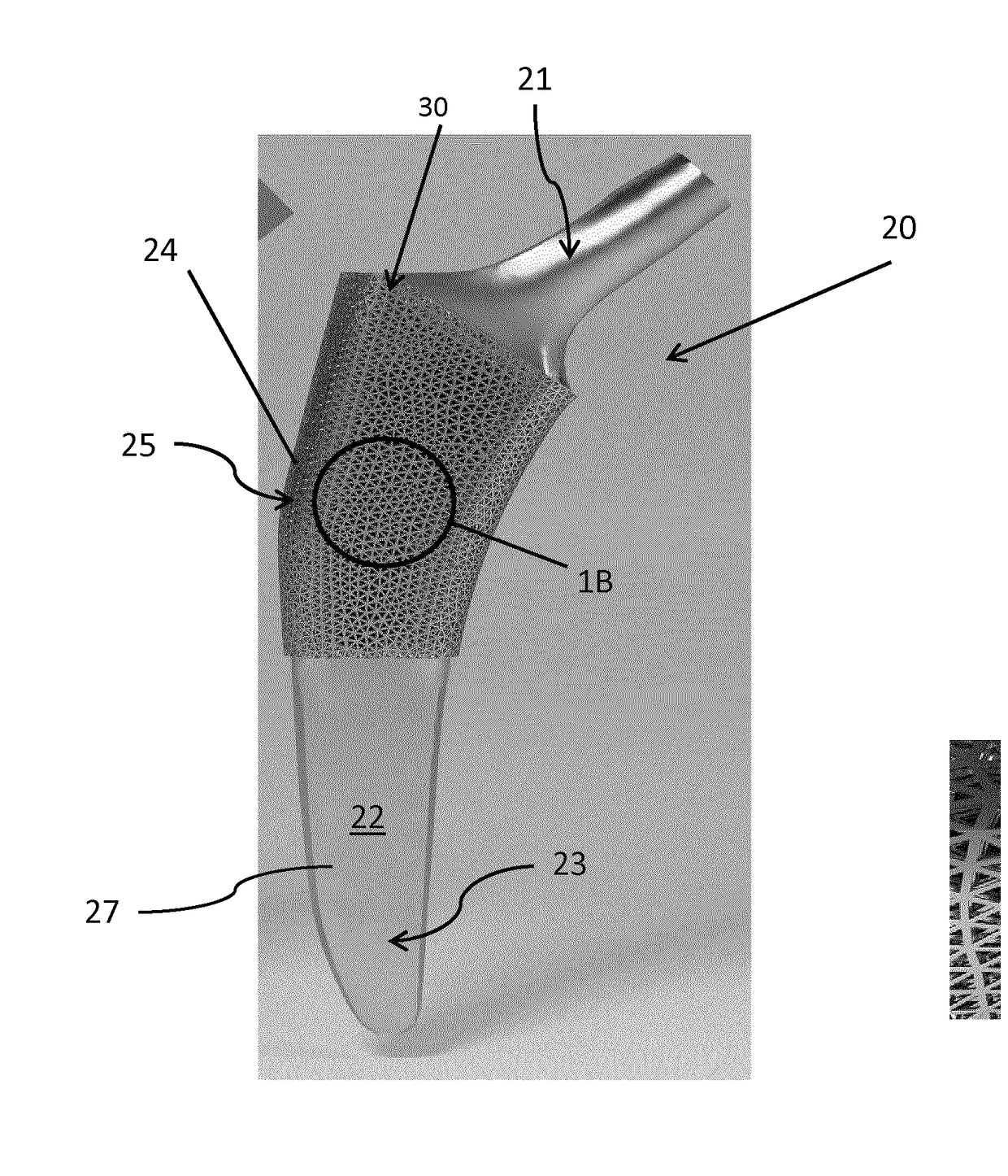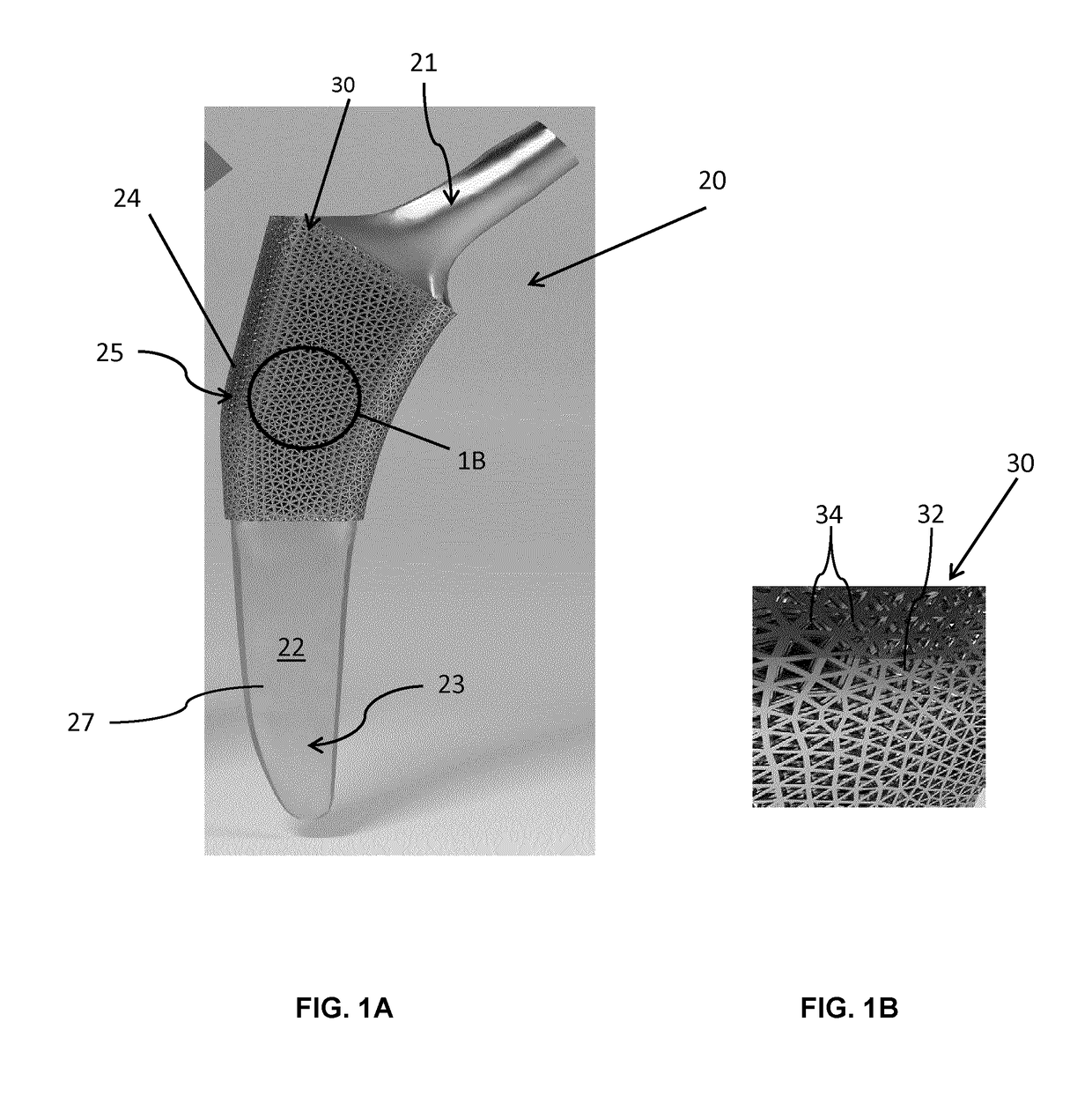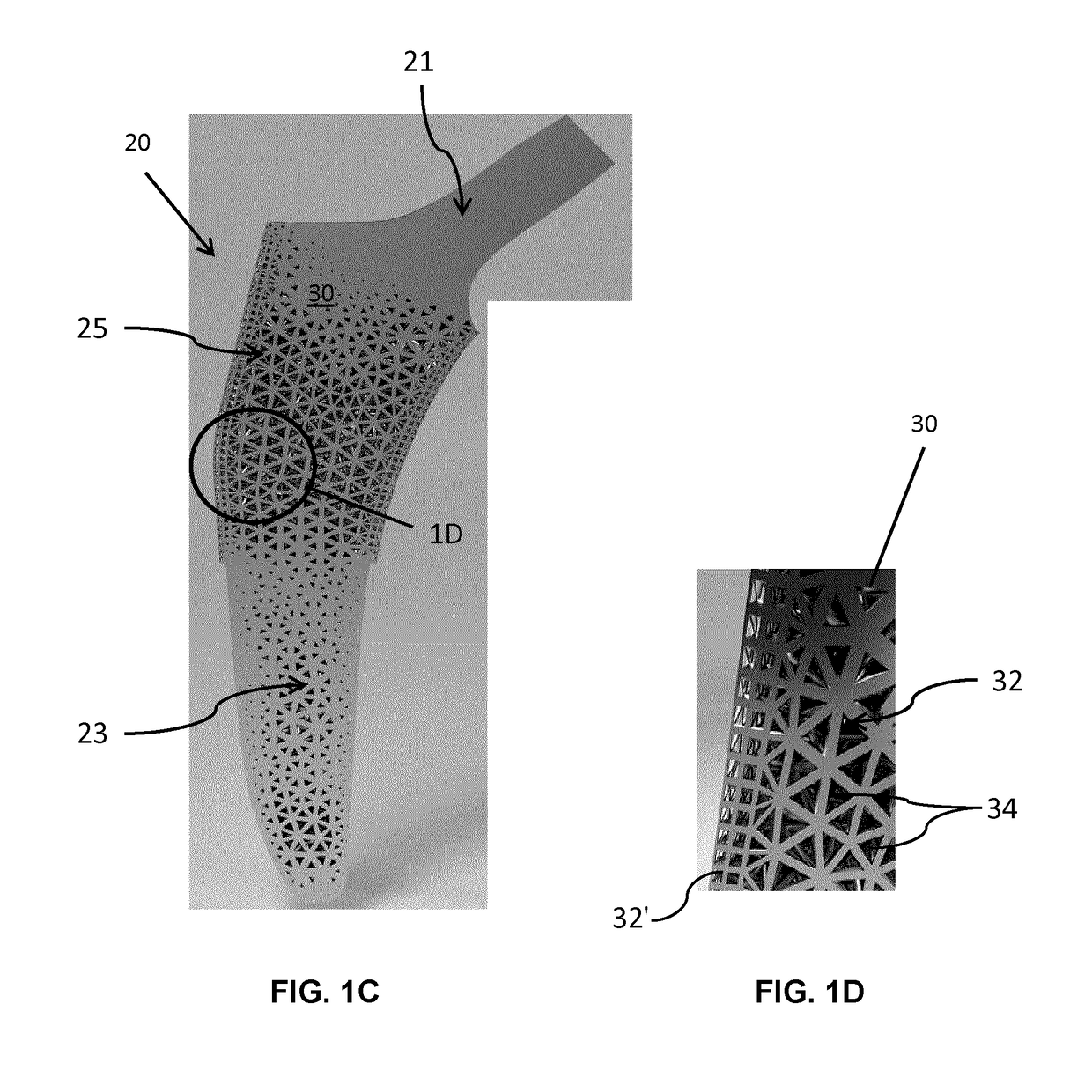Structural porous biomaterial and implant formed of same
a biomaterial and microstructure technology, applied in the field of prosthetic implants, can solve the problems of less capable of solving the conflicting nature of physiological phenomena occurring in implants, uneven cell distribution, and inability to provide the strength required for all applications, and achieve the effect of improving the mechanical properties of cells
- Summary
- Abstract
- Description
- Claims
- Application Information
AI Technical Summary
Benefits of technology
Problems solved by technology
Method used
Image
Examples
experimental example
[0104]Referring now to FIGS. 3A and 3B, unit cells forming the fully tessellated lattices 132 and 332 described above, namely the octet truss cell 134 (FIG. 3B) the tetrahedron cell 334 (FIG. 3A) respectively, will now be described in further detail. Both of these cell topologies are high-strength, stretching dominated, topologies which were designed, fabricated and tested by the inventors in the manner described below.
[0105]Using Selective Laser Melting (SLM), two design points were fabricated within constraints for both tetrahedron 334 and octet truss 134 cells, in order to assess the bone ingrowth and apposition at four and eight week intervals in a canine model. Bone ingrowth was shown to occur with these two high strength lattice cell topologies. To further investigate the mechanical strength of these two cell topologies, the inventors manufactured eight design points with SLM, and the deviation was quantified between designed and manufactured morphological parameters using Mic...
PUM
| Property | Measurement | Unit |
|---|---|---|
| pore size | aaaaa | aaaaa |
| pore size | aaaaa | aaaaa |
| thickness | aaaaa | aaaaa |
Abstract
Description
Claims
Application Information
 Login to View More
Login to View More - R&D
- Intellectual Property
- Life Sciences
- Materials
- Tech Scout
- Unparalleled Data Quality
- Higher Quality Content
- 60% Fewer Hallucinations
Browse by: Latest US Patents, China's latest patents, Technical Efficacy Thesaurus, Application Domain, Technology Topic, Popular Technical Reports.
© 2025 PatSnap. All rights reserved.Legal|Privacy policy|Modern Slavery Act Transparency Statement|Sitemap|About US| Contact US: help@patsnap.com



